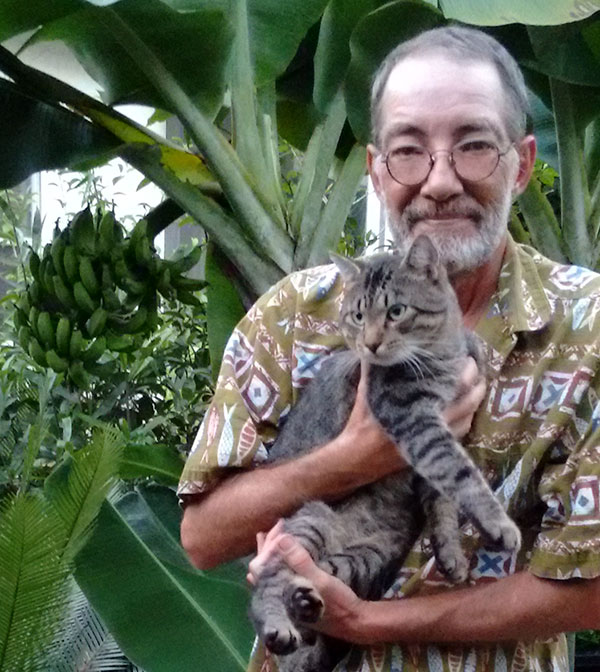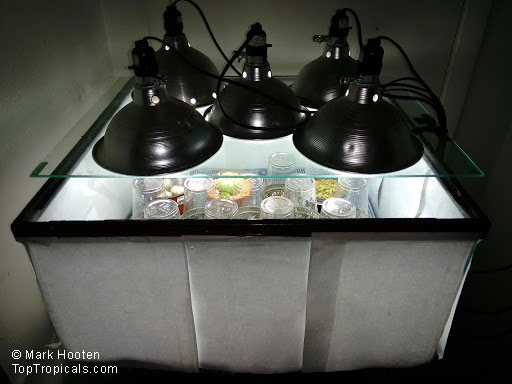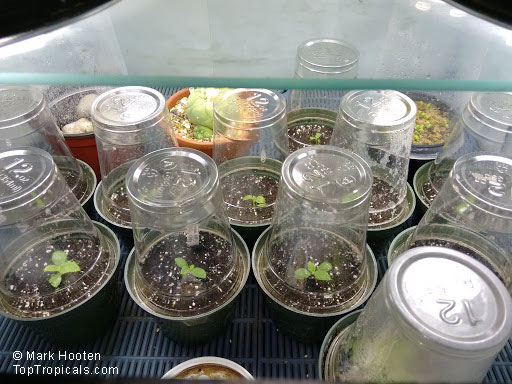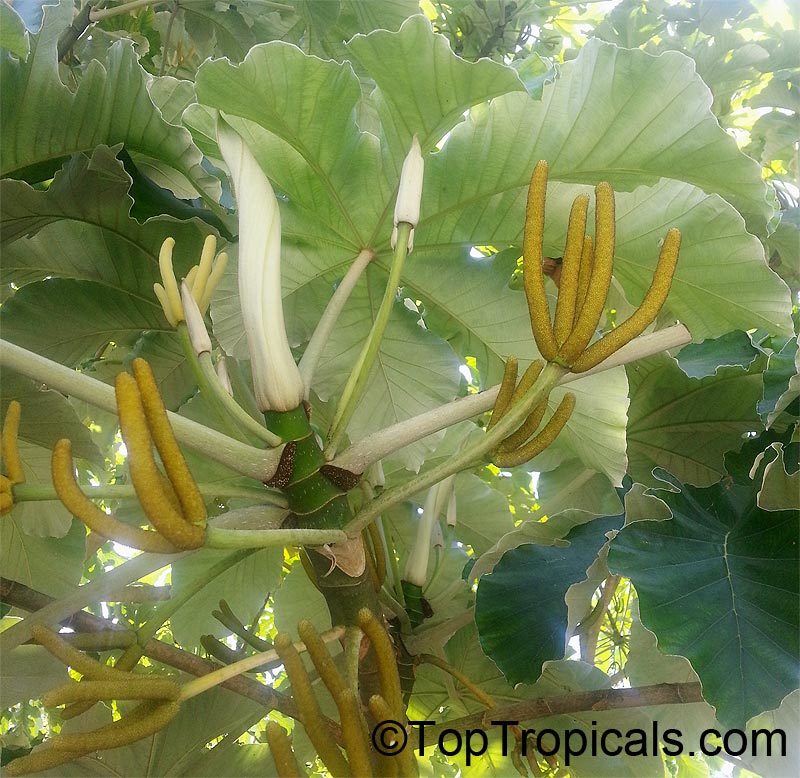Secrets of turtle tank controlled propagation unit
by Mark Hooten, the Garden Whiz
 About the Author
About the Author
Mark Hooten has been fascinated by horticulture since childhood, with interests including tropical fruits, cacti, ethnobotany, entheogens, and variegates. Having been employed in both FL and CA by botanical gardens and specialist nurseries as horticulturist, manager, propagator, and consultant, he is happy to speak with fellow plant worshipers at TopTropicals Nursery. Mark is currently busy writing a volume on the complicated history of croton varieties. His passions are plants, cats, and art of painting.
A few years ago, I decided I wanted a small, indoor, artificial light propagation unit. I used an old turtle tank with the dimensions of 24 by 24 inches wide, and one foot tall. That gave me plenty of growing space, while keeping the lights close to the plants. I placed a pane of glass over the top, and set five shop reflectors on-top of the glass, each containing a 75 watt, "daylight" spiral fluorescent bulb. These five lights keep the inside bright enough to permanently grow even very high light growing cacti! These in-turn were plugged into a power strip which was then plugged into a 24 hour timer.

BTW, I generally keep the timer set for 16 hours of exposure. I simply taped white paper around the outside to keep the inside as evenly bright as possible (despite popular belief, white acts to reflect more light than "grey" shiny aluminum foil). I also placed the tank upon two cheaply available though rarely used seedling heat strips in case it might get too cold... it does get chilly here in S.W. Florida! ;) This very simple system has worked incredibly well for me. I use it mostly for seed propagation, and sometimes for cuttings. I have used it to create probably thousands of plants over the years.
Currently, I'm concentrating on growing seeds of one of my all-time favorite spectacular trees, Cecropia peltata. They are very tropical, and outside of a conservatory can likely only be grown in the Southest of Florida in the continental U.S.. The trees are either male or female, and even when both are grown together, seeds are rarely produced. Because of this, propagation is normally done utilizing air-layering, which at best is a hit or miss proposition, so they remain very difficult to find. However, here at Top Tropicals we were able to locate good fresh seeds from South America, and realizing they are notoriously difficult to grow, I brought them home to plant in my very controlled propagation unit. The results are noteworthy!

Experimentally, I first planted a 4 inch pot using a finely sifted seedling mix and an upper layer of very finely milled sphagnum. The very very tiny seeds require light to germinate, so they were only barely pressed into the sphagnum using a blunt toothpick. After being mist watered with a mild fungicide to reduce the risk of damping-off, I placed the regular clear plastic 12 oz. disposable cups I normally use over the 4 inch pots (which fit them perfectly somehow). This keeps the humidity at about 100%, meaning they rarely need extra watering, plus the delicate seeds/seedlings require a very "close" terrarium-like environment.
Within little more than a week, wonderful tiny baby Cecropia trees began springing up! At the age of only 3 weeks, they were beginning to crowd one another, and were just recently carefully separated and placed each in their own 4 inch pot with the plastic cups. They are thriving. I have another even larger batch coming along which was planted a couple of weeks after the first began germinating. Both the batches of seedlings can be seen in one image, while the other shows them individually after separation. I had to be very meticulous at every step, however, it is paying off.
AND, we'll soon have lots of nice healthy trees to offer to to all the many individuals who have requested them!
Buy this plant from our store...
